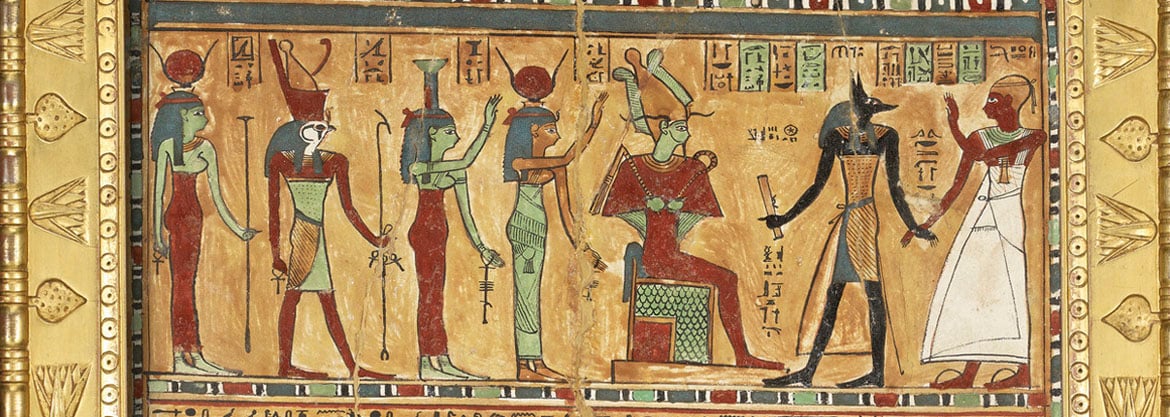Conservation of an ancient Egyptian funerary stela

While in Thebes the Prince of Wales had the opportunity to participate in archaeological excavations. On the 18th March he wrote in his journal:
I was looking at some excavations, which were going on behind the Memnonium; the Viceroy had been kind enough to give permission for them, and that everything that was found I might have; only a small mummy and a tablet were however found, which I took with me.
The tablet described above by the Prince of Wales is identifiable with the ancient Egyptian 3rd century BC wooden funerary stela, belonging to ‘Gods father and Prophet of Amun-Re, King of the Gods, Nakhtmontu, son of the High Priest of Amun, Nespautitawy’.
The Prince of Wales commissioned a carved gilt frame, which features Egyptian style motifs, on his return to London. The main part consists of the sun symbol flanked by two snake heads and stylised wings.
In order to bring this object to the exhibition it was first necessary to stabilise it. It was evident from visual examination that the object had suffered structural as well as superficial damage and losses and that further handling, moving and exhibiting of the object without intervention would result in greater damage and loss.
It is probable that some of the damage was caused prior to the framing of the object. It is possible that during transport from Egypt to London, or during excavation, some structural damage was caused, since areas show old repairs of fragments which had been re-attached. However, it is likely that much of the cracking and lifting of paint and gesso was caused by environmental changes: during its original burial the stela would have been in a stable dry environment and with its removal from this original environment changes in humidity and temperature would have resulted in the expansion and contraction of the wood, plaster and binder in the paint. It is likely that the stela remained untouched after it was framed in the late 19th century.







